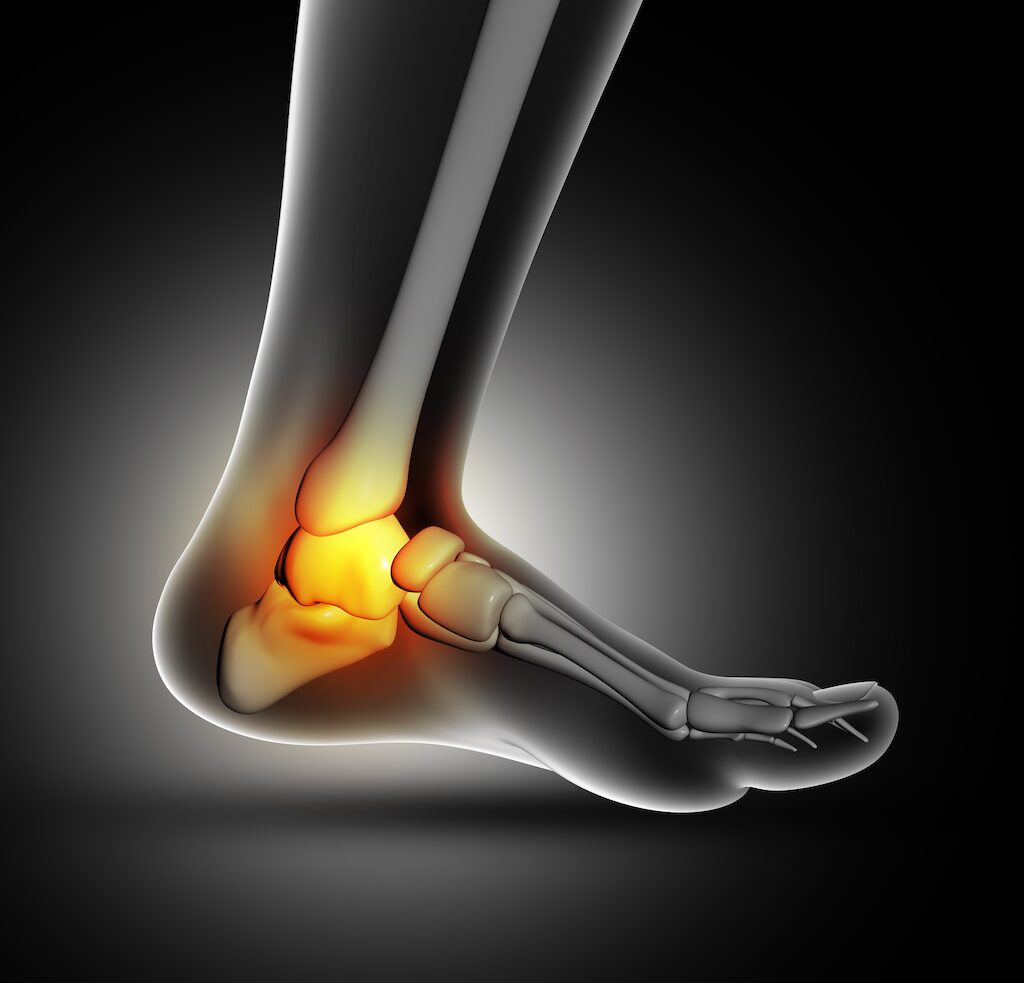Ankle replacement surgery is a viable solution for individuals experiencing end-stage ankle arthritis. This condition often results from wear and tear, injury, or inflammatory diseases like rheumatoid arthritis. While less common than hip or knee arthritis, ankle arthritis can significantly impact daily life, leading to pain and disability comparable to end-stage hip arthritis.
During the surgery, the damaged portions of the ankle joint are carefully removed and replaced with artificial components made of metal and plastic. These components mimic the natural anatomy and function of the ankle joint, allowing for improved mobility and reduced pain.
Unlike ankle fusion, which locks the joint in a fixed position, ankle replacement preserves joint motion, enabling patients to walk more naturally. The surgery is typically performed under general anaesthesia or a spinal anaesthetic, and recovery time varies but often involves a period of immobilisation followed by physiotherapy to regain strength and mobility.
While ankle replacement may not restore full normal function, it can provide significant relief and enable individuals to return to activities they enjoy, such as walking and cycling, with reduced discomfort and improved quality of life.

The surgery is typically performed under either general anaesthesia or a spinal anaesthetic and usually lasts about 2 hours. An incision is made at the front of the ankle, through which the worn-out surfaces of the ankle joint are carefully removed. Special instruments guide the insertion of the prosthesis, which consists of a metal component made of titanium and chrome cobalt placed on the bottom of the shin bone (tibia) and another on the top of the ankle bone (talus). Between these components is an articulating biocompatible plastic called polyethylene.
These components are typically 'uncemented,' meaning they have a roughened surface that allows the bone to gradually grow onto the prosthesis, permanently fixing it in place. Sometimes, additional procedures may be necessary during surgery, such as lengthening a tight Achilles tendon, stabilising ligaments, or realigning/fusing surrounding bones or joints.
After surgery, your leg will be placed in a plaster splint, and an anaesthetic nerve block is often administered to help manage pain during the initial recovery period.
The primary benefit of ankle replacement surgery lies in its capacity to preserve joint mobility, thereby promoting a more physiologically sound walking gait and enhancing overall functional outcomes. Additionally, this procedure serves to better safeguard the integrity of adjacent joints, such as the subtalar joint, compared to an ankle fusion procedure. With an ankle fusion, the surrounding joints are subjected to increased stress, potentially leading to progressive arthritis, and necessitating further fusion procedures within the foot.
Although ankle replacement does not restore full normal joint movement, it does afford a considerable and functional range of motion. In general, individuals who undergo ankle replacement experience significant improvement in symptoms and can resume a relatively active lifestyle, free from the debilitating pain associated with ankle arthritis.
There are a few different ankle prosthesis designs available in Australia.
Dr Tymms at OrthoSport Victoria is one of the most experienced ankle replacement surgeons in Victoria. He carefully chooses a modern prosthesis for your ankle based on the best current science and results of studies on ankle replacement surgery.
While ankle replacement surgery can offer significant benefits, it is essential to consider potential risks and complications.
These may include anaesthesia-related risks, infection, fracture, blood clots, nerve damage, stiffness, scarring, loosening of the replacement, persistent pain, and the possibility of needing additional surgery.
Following ankle replacement surgery, patients typically spend 3-4 days in the hospital for pain management and initial mobility training.
The first two weeks at home are crucial for proper wound healing, with the leg elevated to minimise swelling. At around 6 weeks post-surgery, patients can usually begin full weight-bearing activities with the assistance of a moon boot or cast.
Physical therapy is initiated to improve strength and mobility, with most patients achieving significant recovery within 3-6 months. However, full recovery of swelling, strength, and overall comfort in the ankle may take longer, up to 6+ months
Recovery Times
Time off work:
After undergoing ankle replacement surgery, it’s important to have realistic expectations about the long-term outcomes and potential challenges that may arise. Here’s what you can anticipate:
Overall, while ankle replacement surgery can significantly improve quality of life by alleviating pain and restoring mobility, it’s essential to understand the potential long-term outcomes and to follow post-operative care instructions provided by your orthopaedic surgeon. Regular follow-up appointments and maintenance of a healthy lifestyle can help ensure the continued success of your ankle replacement.
These notes from OrthoSport Victoria are for educational purposes only and are not to be used as medical advice. Please seek the advice of your specific surgeon or other health care provider with any questions regarding medical conditions and treatment.
Image by kjpargeter on Freepik
If you are looking to book an appointment, please call us on